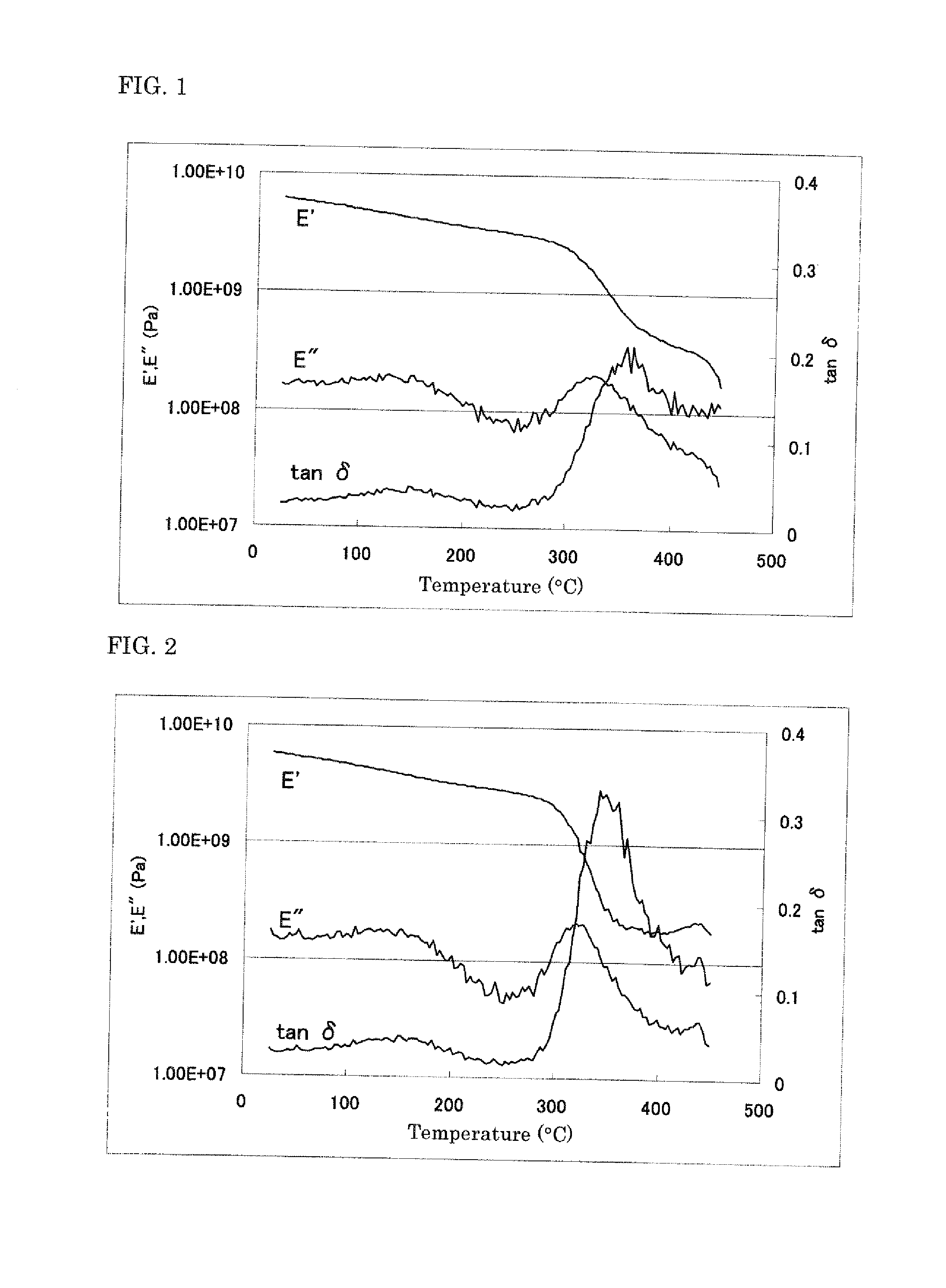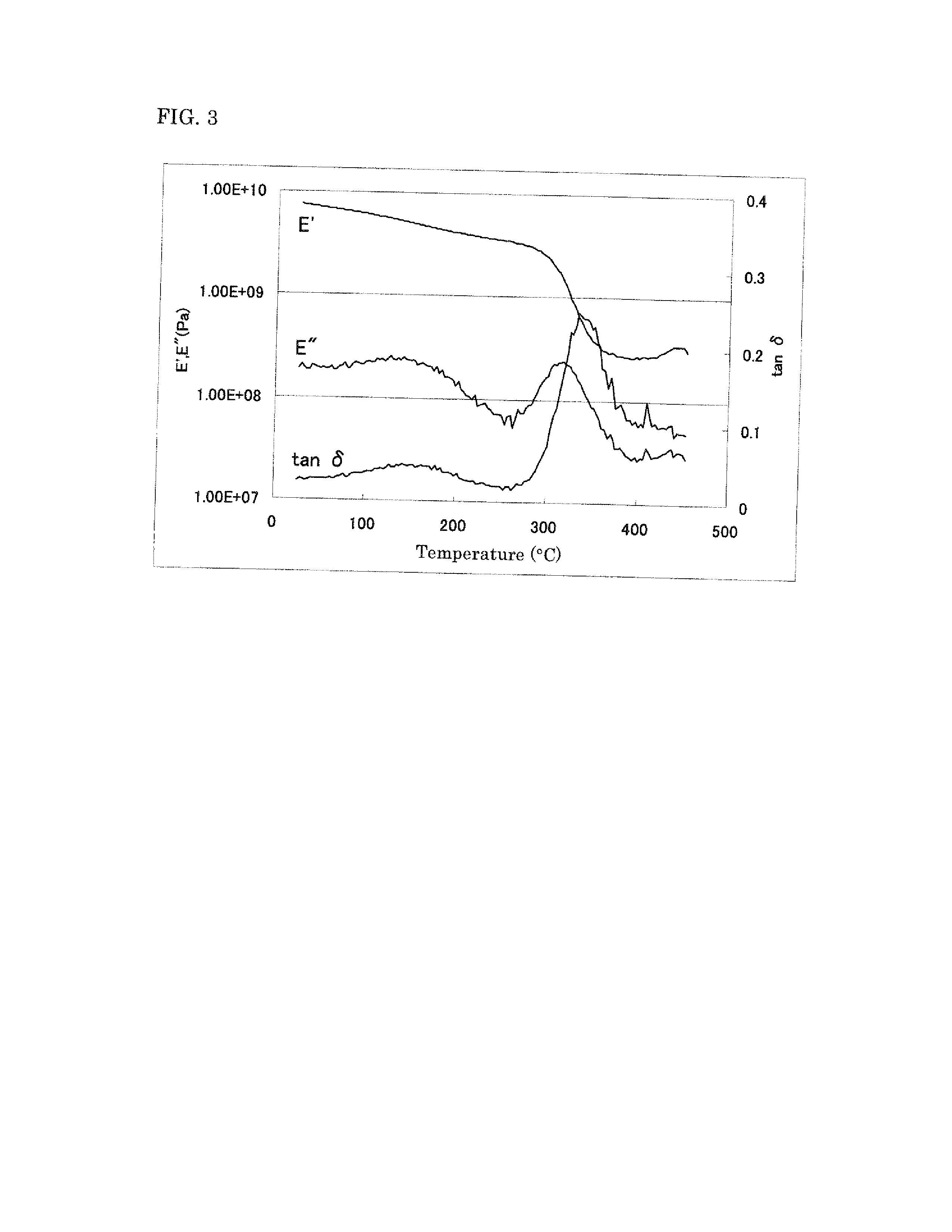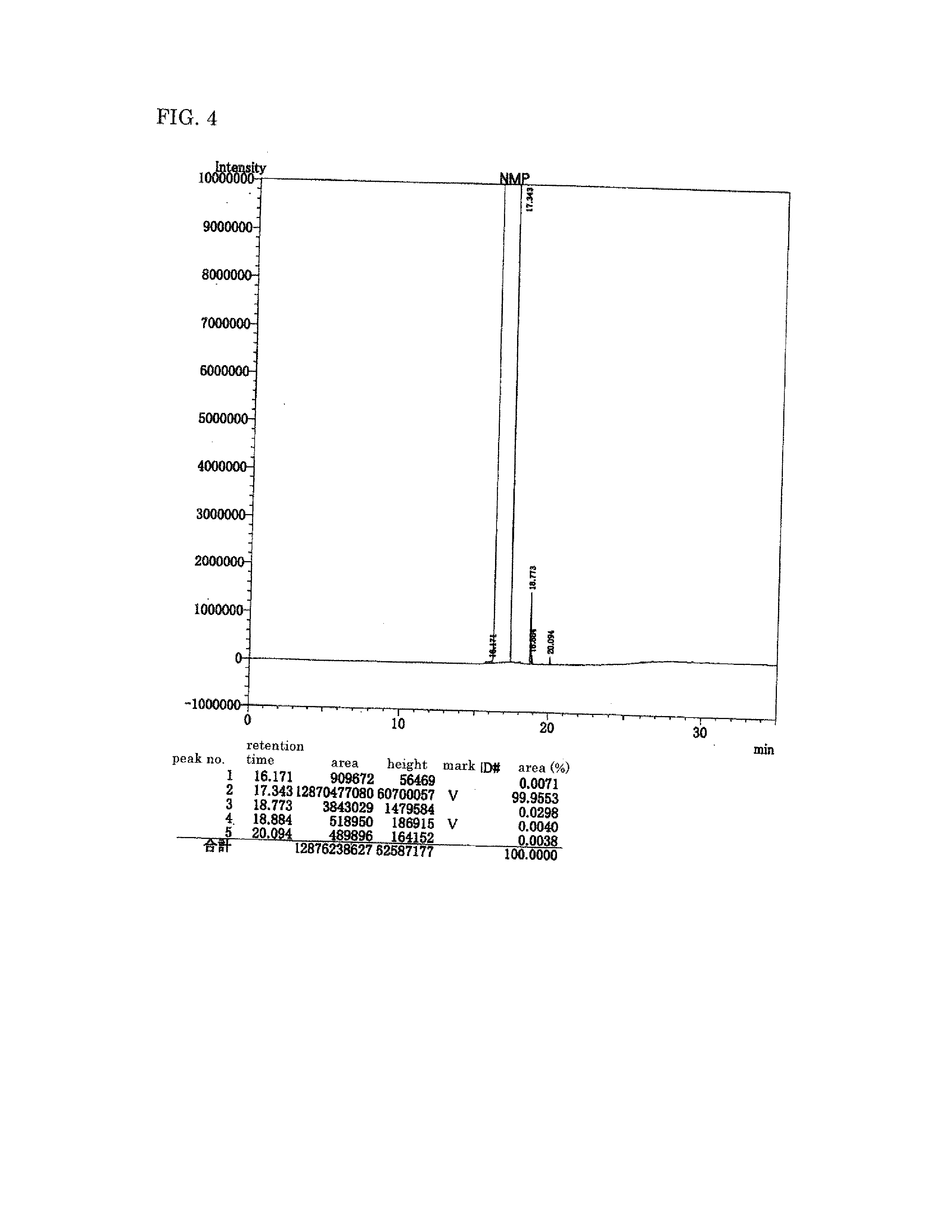Polyimide precursor, polyimide, and materials to be used in producing same
a polyimide and precursor technology, applied in the field of polyimide precursors and polyimide materials to be used in producing same, can solve the problems of preventing the progress of polymerization, insufficient base materials, and 5 to 7% of polyimide, and achieve excellent transparency, high glass transition temperature, and high heat resistance
- Summary
- Abstract
- Description
- Claims
- Application Information
AI Technical Summary
Benefits of technology
Problems solved by technology
Method used
Image
Examples
examples
[0500]The present invention will now be described in more detail based on the following examples and comparative examples. However, the present invention is not limited to the following examples.
Examples of PART A
[0501]In each of the following examples, evaluation was carried out based on the following methods.
[0502]Evaluation of Polyimide Precursor
[0504]One gram of polyimide precursor solution was weighed into an aluminum dish, and heated for 2 hours in a 200° C. hot air circulating oven to remove the non-solid content. The varnish solid content (heating residue mass %) was determined from the residual matter.
[0505][Rotational Viscosity]
[0506]The viscosity of the polyimide precursor solution at a temperature of 25° C. and a shear rate of 20 sec−1 was determined using a TV-22 E-type rotary viscometer manufactured by Toki Sangyo Co., Ltd.
[0507][Logarithmic Viscosity]
[0508]The logarithmic viscosity was determined by measuring a 0.5 g / dL solution of the pol...
example a1
[0526]In a reaction vessel, 10.82 g (0.0947 mol) of trans-1,4-diaminocyclohexane (may be referred as t-DACH below) was charged and dissolved in 313.0 g of N,N-dimethylacetamide (may be referred as t-DMAc below) that had been dehydrated using a molecular sieve. To the solution, 26.48 g (0.090 mol) of 3,3′,4,4′-biphenyltetracarboxylic dianhydride (may be referred as s-BPDA below) and 1.394 g (0.0047 mol) of 2,3,3′,4′-biphenyltetracarboxylic dianhydride (may be referred as a-BPDA below) was gradually added, and the resultant mixture was heated to 120° C. When the start of dissolution of salts in about 5 minutes was confirmed, the mixture was cooled rapidly to room temperature and held at room temperature for 8 hours with stirring to obtain a uniform and viscous co-polyimide precursor solution composition.
[0527]The obtained polyimide precursor solution composition was applied on a glass substrate, and thermally imidized by heating at 120° C. for 1 hour, at 150° C. for 30 minutes, at 200...
example a2
[0528]In a reaction vessel, 6.851 g (0.06 mol) of trans-1,4-diaminocyclohexane was charged and dissolved in 220.5 g of N,N-dimethylacetamide that had been dehydrated using a molecular sieve. To the solution, 15.89 g (0.054 mol) of 3,3′,4,4′-biphenyltetracarboxylic dianhydride and 1.765 g (0.006 mol) of 2,3,3′,4′-biphenyltetracarboxylic dianhydride was gradually added, and the resultant mixture was heated to 120° C. When the start of dissolution of salts in about 5 minutes was confirmed, the mixture was cooled rapidly to room temperature and held at room temperature for 8 hours with stirring to obtain a uniform and viscous co-polyimide precursor solution composition.
[0529]The obtained polyimide precursor solution composition was applied on a glass substrate, and thermally imidized by heating at 120° C. for 1 hour, at 150° C. for 30 minutes, at 200° C. for 30 minutes and finally up to 400° C. while holding it on the substrate to obtain a colorless transparent co-polyimide / glass lamina...
PUM
| Property | Measurement | Unit |
|---|---|---|
| Temperature | aaaaa | aaaaa |
| Temperature | aaaaa | aaaaa |
| Temperature | aaaaa | aaaaa |
Abstract
Description
Claims
Application Information
 Login to View More
Login to View More - R&D
- Intellectual Property
- Life Sciences
- Materials
- Tech Scout
- Unparalleled Data Quality
- Higher Quality Content
- 60% Fewer Hallucinations
Browse by: Latest US Patents, China's latest patents, Technical Efficacy Thesaurus, Application Domain, Technology Topic, Popular Technical Reports.
© 2025 PatSnap. All rights reserved.Legal|Privacy policy|Modern Slavery Act Transparency Statement|Sitemap|About US| Contact US: help@patsnap.com



